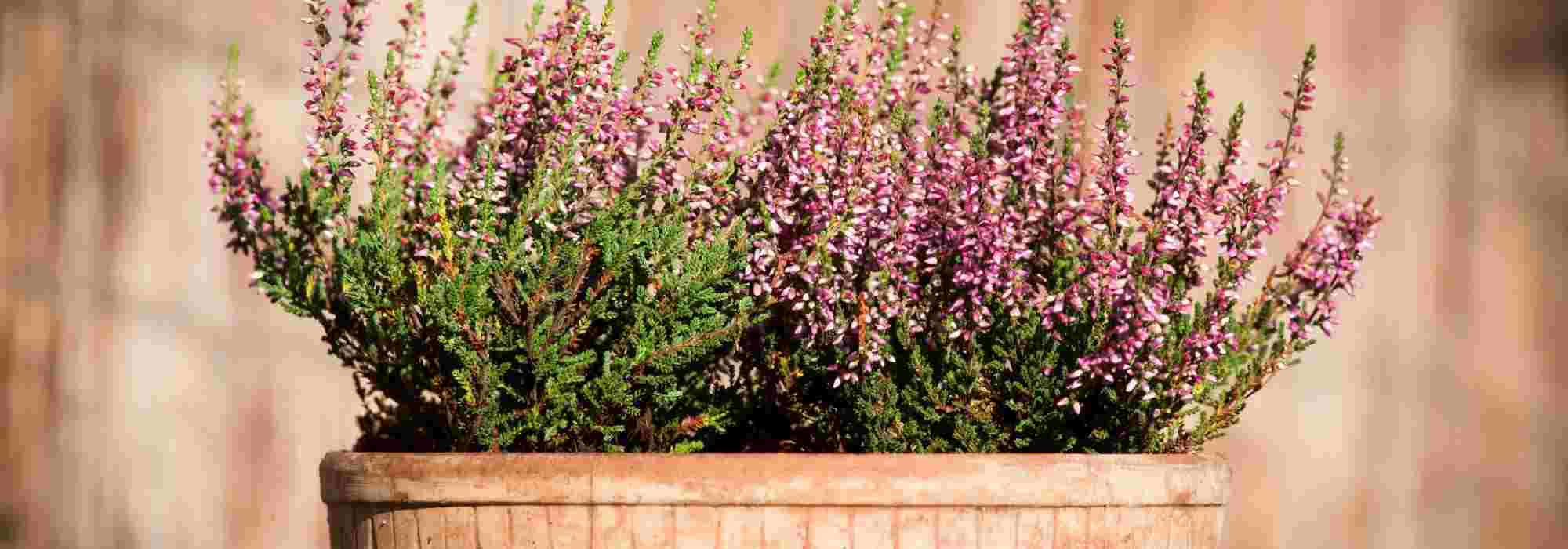
How to grow heather pots?
Our tips for successful planting and maintenance
Contents
If heathers are known to be easy to grow, they do require somewhat specific growing conditions. Most varieties indeed need soil with a rather acidic pH, so non-calcareous and perfectly drained.
However, this evergreen undershrub has the advantage of being cultivated both in the ground and in pots. Growing in pots allows you to enjoy heather even in unsuitable gardens, or simply to brighten up window sills, terraces, and balconies.
Shrubby varieties, which are less hardy than other heathers, will also thrive in pots. They can thus be easily sheltered from severe frosts in winter.
Here are our tips for properly planting and maintaining heathers in pots.
And to learn more about growing heathers, feel free to read our dedicated article: Heathers: planting, pruning, and care.
Which varieties of heathers to choose?
Heather generally has a slow growth rate and small silhouettes: these characteristics make it naturally well-suited for pot or container cultivation.
Winter heather, summer heathers, or shrubby heathers: almost all varieties can be grown in pots, requiring just a bit of attention and care at planting time.
Consider rounded varieties with a compact habit, such as snow heather Erica carnea ‘Jenny Porter’ (30 cm in all directions) or Erica darleyensis ‘Eva Gold’ (40 cm in all directions).
In a container, spreading varieties will also thrive. Choose between winter heather Erica darleyensis ‘Ghost Hills’, ‘White Perfection’ (approximately 40 cm tall with a spread of 70 cm), or the small Erica carnea ‘December Red’ (25 cm tall with a spread of 40 cm).
A bit larger, but still perfectly suited for pot or container cultivation, shrubby varieties will add a bit more volume to the garden. This includes the shrubby heather Erica nana ‘Limoncello’ with its unique yellow flowers (50 cm tall with a spread of 40 cm) or the Cape heather Erica verticillata (90 cm tall with a spread of 80 cm).
Conversely, avoid the larger shrubby varieties, such as Christmas heather Erica canaliculata, measuring 1.5 metres in all directions, or the tree heather ‘Great Star Le Vasterival’, with its 1.5 metres in height and 2 metres in spread. If you wish to grow them in pots nonetheless, we recommend using much larger containers than for other heather varieties.
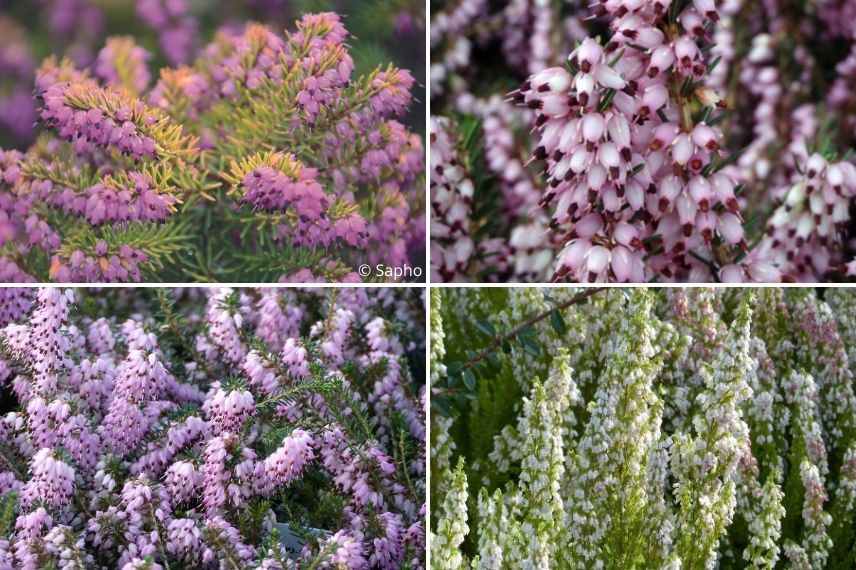
Erica ‘Eva Gold’, Erica darleyensis ‘Ghost Hills’, Erica darleyensis ‘December Red’ and Erica ‘Great Star Le Vasterival’
Read also
Heathers: planting, pruning and careWhen to plant heather in pots?
Heather can, in principle, be planted in pots all year round. However, avoid extreme periods of intense drought in the height of summer or winter frost. The most favourable times remain spring or autumn, to encourage the gentle establishment of your heather.
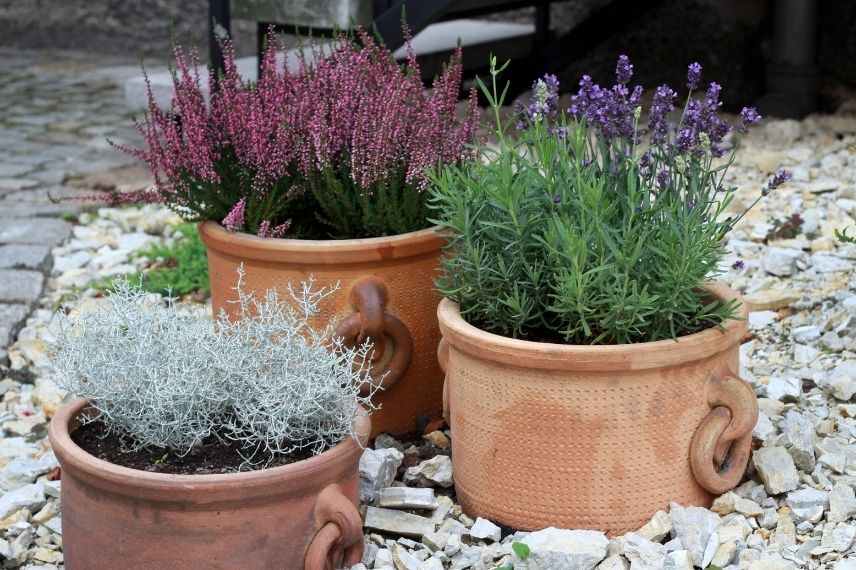
Heather in a pot accompanied by lavender and calocephalus
Discover other Heathers
View all →Available in 0 sizes
Available in 0 sizes
Available in 0 sizes
Available in 1 sizes
Available in 3 sizes
Available in 2 sizes
Available in 2 sizes
Available in 3 sizes
Available in 2 sizes
Available in 1 sizes
Planting heather in pots
Container
Choose a pre-drilled container so that watering or rainwater can drain away properly without risking root rot. Select a pot, basin, planter, or box that is at least 30 to 40 cm deep. For width, adjust the size according to the spread of the chosen variety. Opt for terracotta containers, as the porous material allows the substrate to aerate better.
Substrate
For potting your heather, mix:
- 2/3 of acidic soil
- 1/3 of good quality horticultural compost, or compost for planters and pots or light, non-calcareous garden soil
- a handful of sand to promote drainage (optional)
Planting
A few minutes before planting your heather in the pot, place the root ball in a bucket or basin of water so that the roots can rehydrate.
- At the bottom of the container, create a layer of drainage materials about 5 cm thick (such as clay balls, gravel, broken terracotta, pumice, etc.).
- Place the heather in the centre of the container, then add the mixed substrate.
- Firm down with your hands and add more substrate until the entire root ball is well covered.
- Water generously.
- Mulch to limit evaporation, preferably with pine bark.
Adding a saucer under the container is not obligatory. On the contrary, it may even promote water stagnation and could be detrimental to heathers, which require a well-drained environment.
If you wish to place several heathers in the same container, maintain a planting distance of about 30 to 40 cm between plants. Adjust this distance according to the spread of the chosen varieties.
Exposure
The potted heather should be placed in a sunny or partially shaded position. However, remember to protect it from the scorching rays of the sun, as well as from cold, drying winds or heavy rain.
Heathers have the advantage of tolerating urban pollution well: they can therefore be installed without worry in city gardens. They are also perfect candidates for seaside gardens, due to their resistance to sea spray.
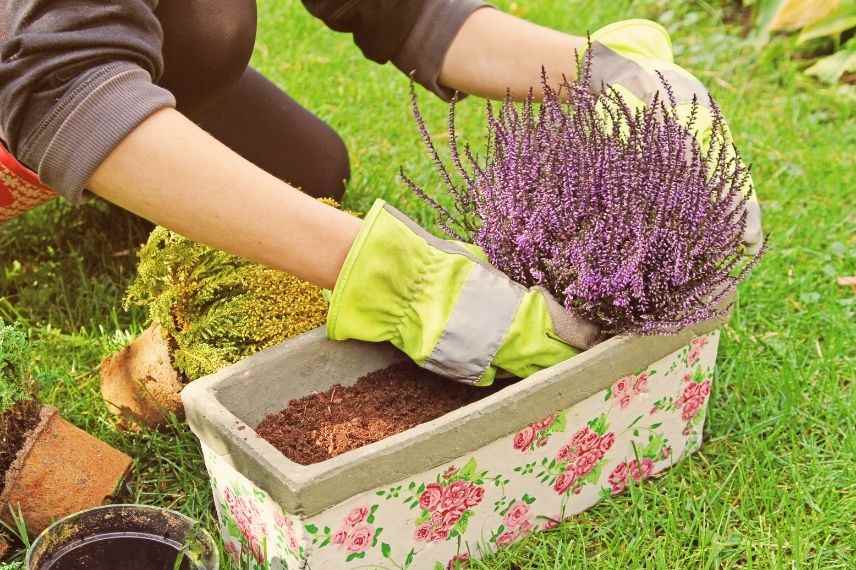 Smaller heathers can be perfectly planted in planters
Smaller heathers can be perfectly planted in planters
Read also
Pruning heather: when and how?Caring for pot-contained heather
Growing heather in pots is simple and does not require any special technical skills. However, the plant will need a bit more attention than one grown in the ground, as the substrate will lose water and nutrients much more quickly due to evaporation.
Watering
In pots, watering should be regular, at a frequency of about once a week. Water when the substrate becomes dry in the top few centimetres. In hot weather, the frequency of watering should be increased.
Prefer rainwater to tap water, which is often too chalky.
Fertilisation
Heathers are not known for their appetite. They thrive in poor, light, even sandy soils. Fertilisation is therefore not necessary for their proper development. Soil that is too rich can even harm flowering.
In pots, as the substrate tends to deplete over time, you can simply add a handful of well-decomposed household compost in spring, mixing it superficially with the rest of the substrate. A mulch of pine bark is usually sufficient to provide the necessary nutrients to the plant as it decomposes gradually.
Pruning
Heathers are slow-growing plants. Therefore, there is no need for regular severe pruning.
At the end of the flowering period (in spring or autumn, depending on the chosen variety), simply remove the faded flowers using clean, sharp shears.
More developed shrub heathers can be pruned after a few years to maintain a harmonious shape and remove dead wood. However, pruning should always be done gently. Severe cutting can indeed harm future flowering. They can also be left unpruned if desired.
For more information, we invite you to read our article: Pruning heather: when and how?
Repotting
Again, as heathers are known for their rather slow growth, repotting will generally only occur after 2 to 3 years. Proceed when they seem cramped in their container or when roots start to protrude through the drainage holes. Ideally, do this in spring or autumn.
Diseases
Heathers are not particularly known for their sensitivity to pests and diseases.
Aphids may appear on the plant. They can be dislodged with a simple jet of water in case of a light infestation. In the event of a more severe attack, spray a mixture of black soap and water (1 tablespoon diluted in 1 litre of water) on the foliage in the late afternoon. This product will act as a natural repellent.
If the substrate is too heavy or lacks drainage, the heather may also be attacked by a fungus (Phytophthora cinnamomi), which causes rot in the stems and roots. As a preventive measure, always use well-disinfected cutting tools during pruning to limit the spread of diseases. If symptoms appear, immediately remove the affected parts. Improve the drainage of the soil and, if you are growing several heathers in the same container, ensure that the plants are not too crowded and have enough space for natural aeration.
To learn more about this disease that can affect potted heather, check our advice sheet: Phytophthora: identify, prevent, control
And to learn more about fungal diseases in general, feel free to read our dedicated article: All you need to know about fungal diseases.
Wintering
Heathers have variable hardiness depending on the cultivars, but generally withstand frosts down to about -20°C. They can therefore spend the winter outdoors, preferably sheltered from cold winds.
In contrast, shrub heathers have more moderate hardiness, ranging from -5 to -10°C. Outside of regions with mild winters, located in the Mediterranean zone or along the Atlantic coast, we recommend protecting your plant from severe frosts by sheltering it in a frost-free room.
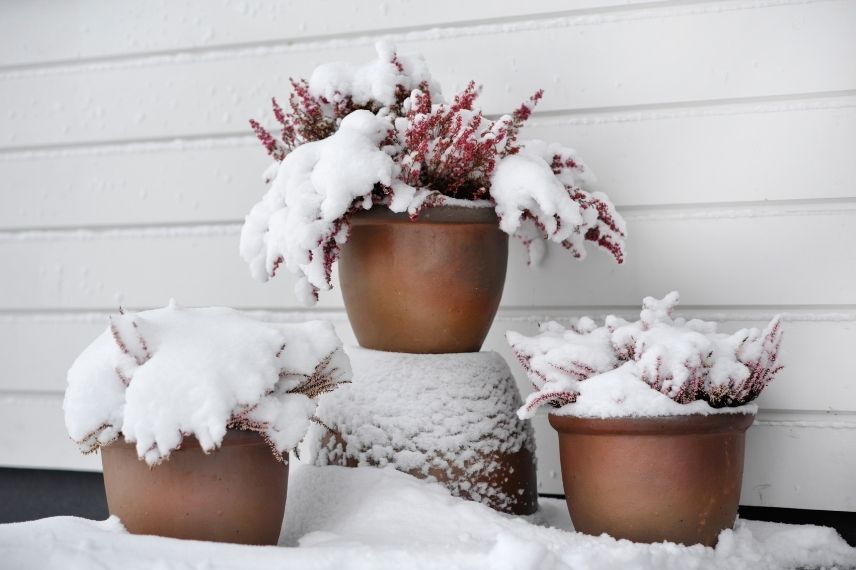 Some heathers can spend the winter outdoors
Some heathers can spend the winter outdoors
- Subscribe!
- Contents
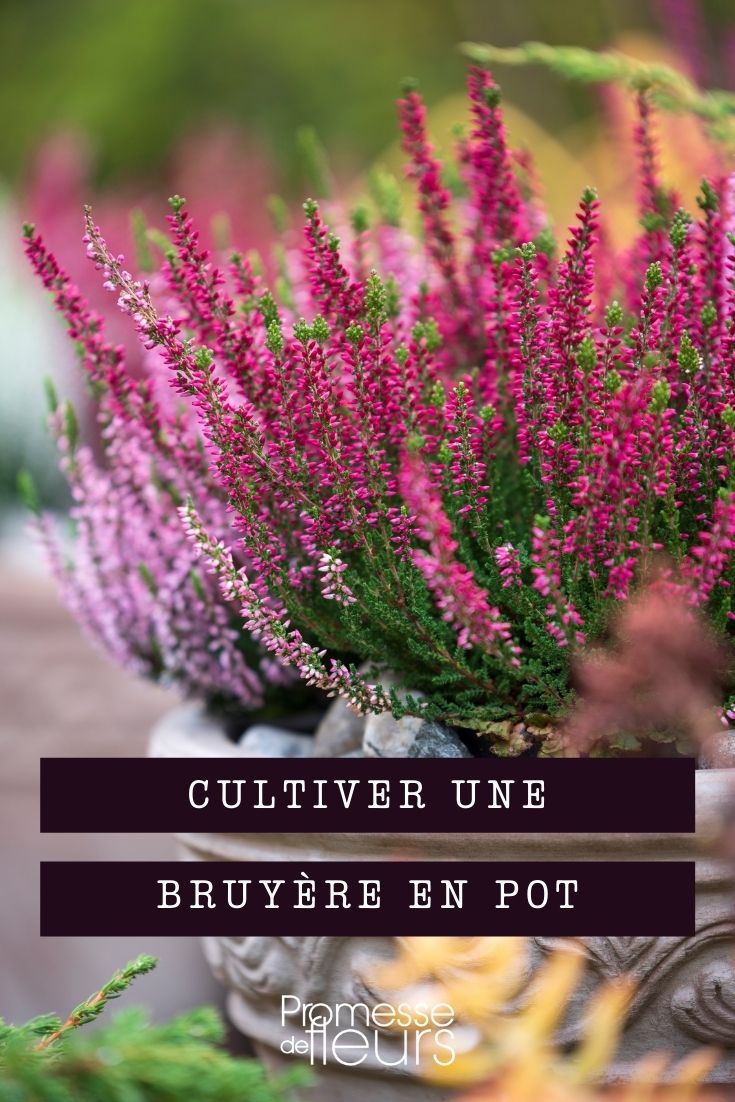































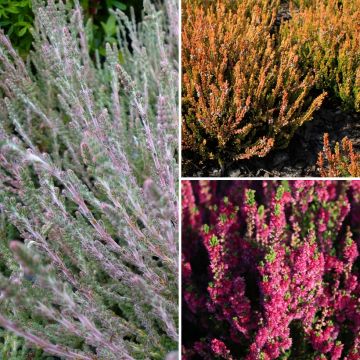
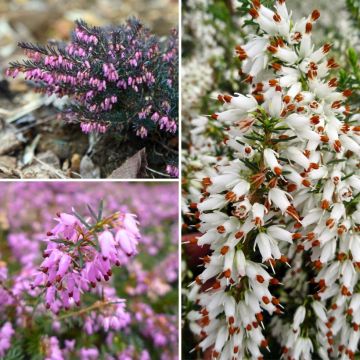



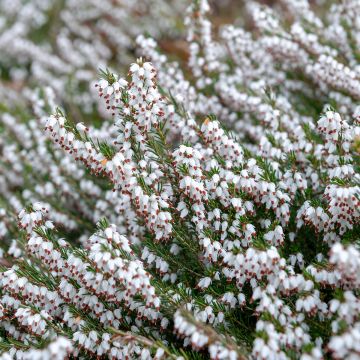

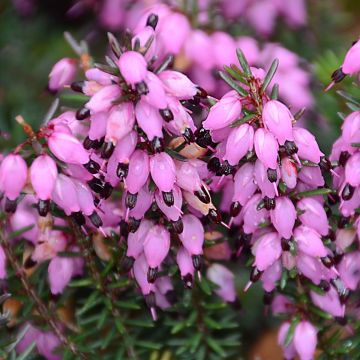
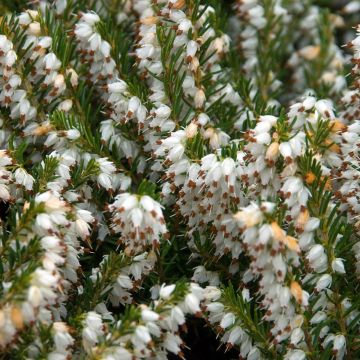
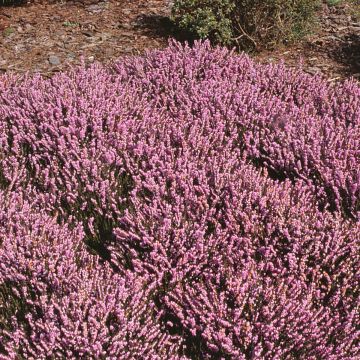
Comments